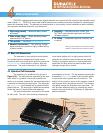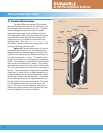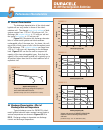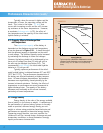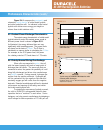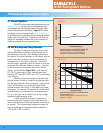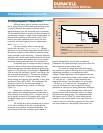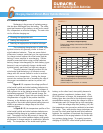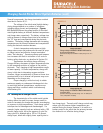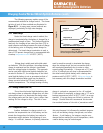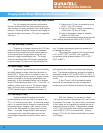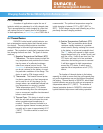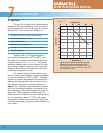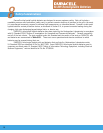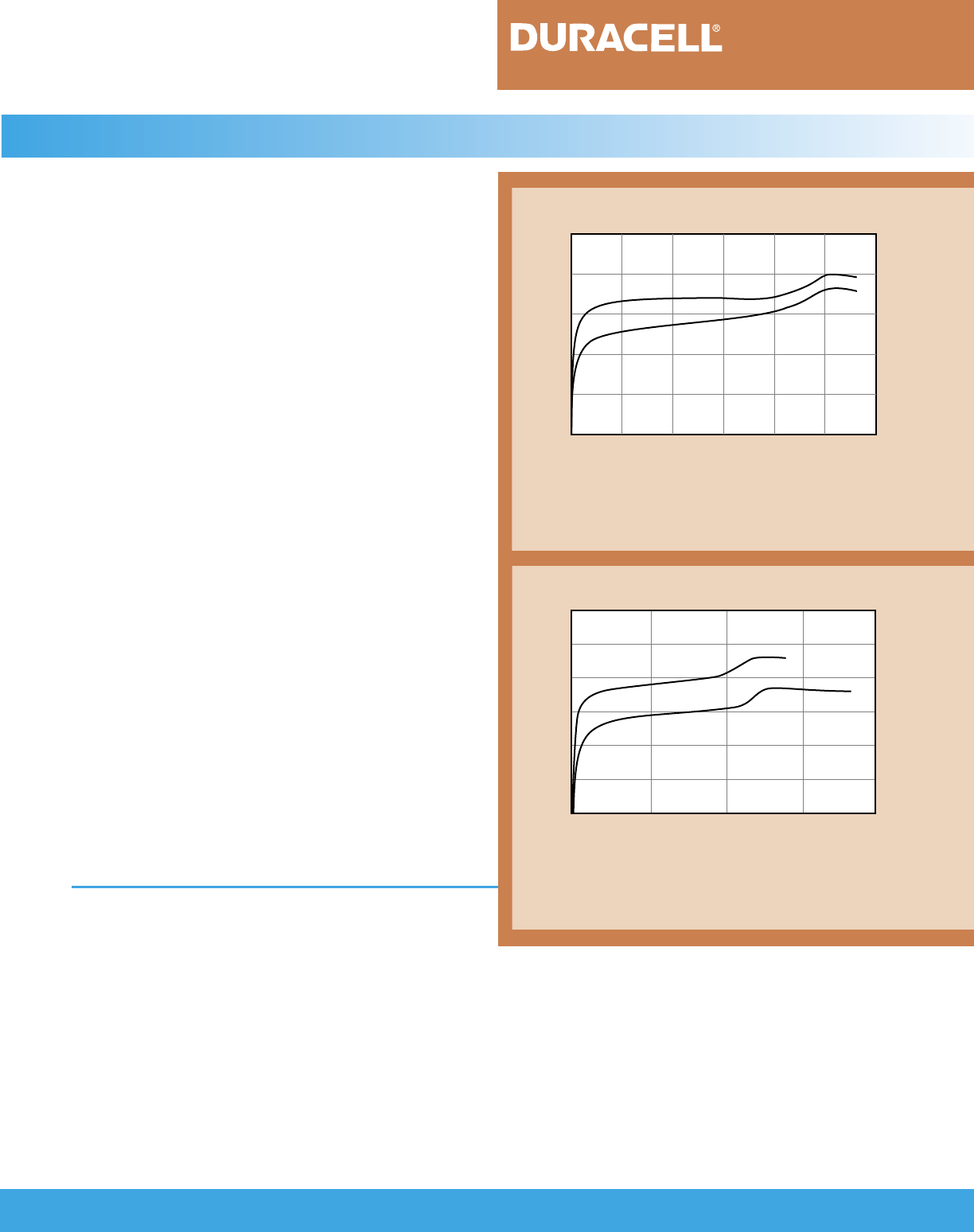
Duracell recommends the charge termination method
described in Section 6.3.1.
The voltage of the nickel-metal hydride battery
during charge depends on a number of conditions,
including charge current and temperature. Figures
6.1.3 and 6.1.4 show the voltage profile of the nickel-
metal hydride battery at different ambient temperatures
and charge rates, respectively. The battery voltage rises
with an increase in charge current due to an increase in
the “IR” drop and overpotential during the electrode
reaction. The battery voltage decreases with increasing
temperature as the internal resistance and overpotential
during the electrode reaction decrease.
A rise in temperature and pressure at high
charge rates occurs and underscores the need for prop-
er charge control and effective charge termination
when “fast charging.” Excessive pressure and tempera-
ture increases can result in activation of cell vents or
battery safety electronics, as described in Section 6.4.
Temperature also affects charge efficiency.
Charge efficiency decreases at higher temperatures due
to the increasing evolution of oxygen at the positive
electrode. Thus, charging at high temperatures results
in lower capacity. At lower temperatures, charge effi-
ciency is high due to decreasing oxygen evolution.
However, oxygen recombination is slower at lower tem-
peratures and a rise in internal cell pressure may occur
depending on the charge rate.
Proper charging is critical not only to obtain
maximum capacity on subsequent discharges but also
to avoid high internal temperatures, excessive over-
charge and other conditions which could adversely
affect battery life.
6.2 Techniques for Charge Control
The characteristics of the nickel-metal hydride
battery define the need for proper charge control in
order to terminate the charge and prevent overcharging
or exposure to high temperatures. Each charge control
technique has its advantages and disadvantages. For
example, higher capacity levels are achieved with a 150
percent charge input, but at the expense of cycle life;
long cycle life is attained with a 105 to 110 percent
charge input, albeit with slightly lower capacity due to
less charge input. Thermal cutoff charge control may
reduce cycle life because higher temperatures are
reached during the charge; however, it is useful as a
backup control in the event that the primary termina-
tion method is not effective during charge.
Ni-MH Rechargeable Batteries
12
Charging Sealed Nickel-Metal Hydride Batteries (cont.)
FIGURE 6.1.3
10.0
9.5
9.0
8.5
8.0
7.5
0 0.2 0.4 0.6 0.8 1.0 1.2
Charge Time (Hours)
Voltage (V)
0°C (32° F)
21
°C (70° F)
Charge voltage of DURACELL DR30 Ni-MH batteries
at various temperatures.
[Conditions: Discharge: C/5 to 6.0V @ 21°C (70°F); Charge: 1C to -∆V =
60mV]
FIGURE 6.1.4
10.0
9.5
9.0
8.5
8.0
7.5
7.0
0 1.0 2.0 3.0 4.0
Charge Capacity (Ah)
Voltage (V)
C (2.4A)
C/5 (0.48A)
Charge voltage of DURACELL DR30 Ni-MH batteries
at various rates.
[Conditions: Discharge: C/5 to 6.0V; Charge: 1C to -∆V = 60mV, C/5 to
7.5 hrs.; Temperature: 21°C (70°F)]



